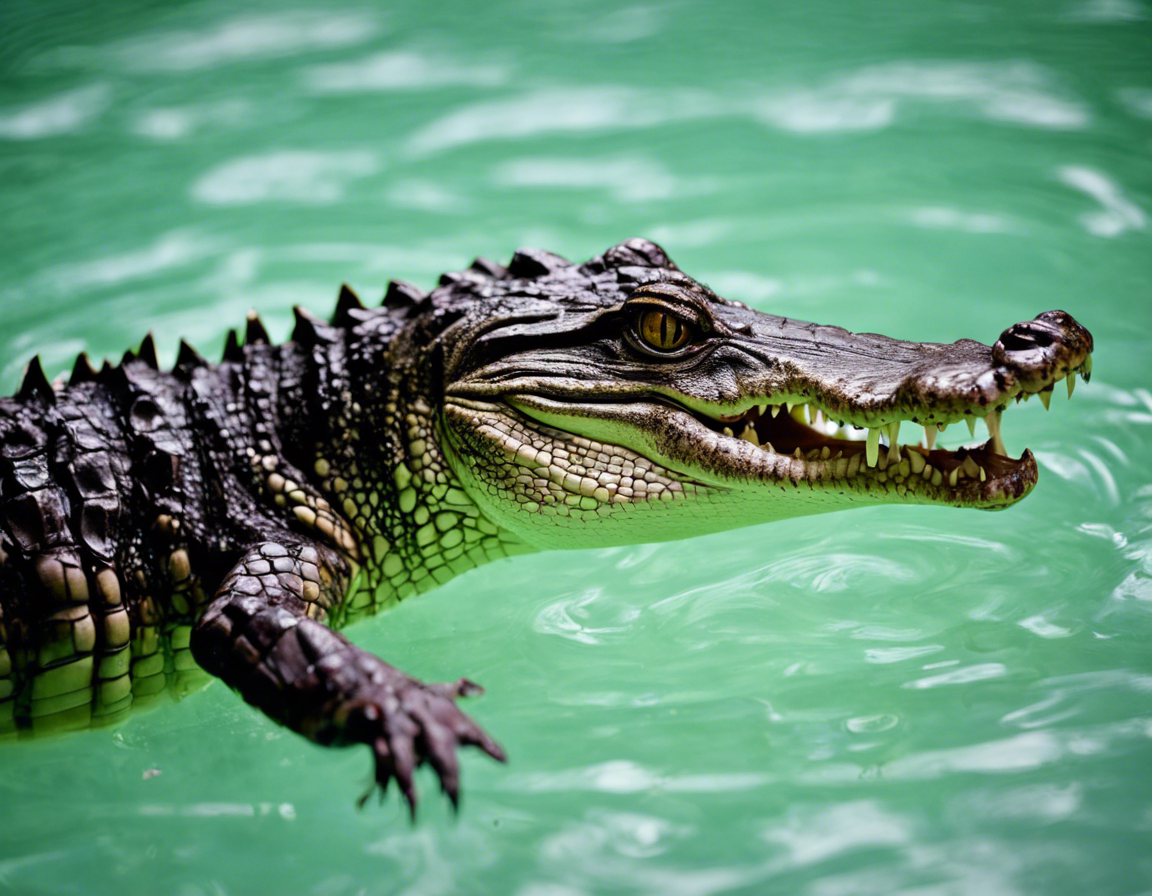If you ever dreamt of seeing exotic wildlife up close and personal, your dreams may have just come true. Reports have recently surfaced of a baby crocodile being spotted in a pool in Dadar, Mumbai, leaving locals both baffled and intrigued. The sight of this reptilian wonder has undoubtedly sparked a wave of curiosity and concern among the community.
The Mystery Unraveled
The appearance of a baby crocodile in an urban setting raises many questions about how such a creature ended up in a pool far from its natural habitat. Crocodiles are not native to Mumbai, which makes this sighting even more surprising. So, how did this little reptile find its way into the heart of the city?
One plausible theory is that it may have been someone’s exotic pet that either escaped or was released into the wild. Another possibility is that it traveled through the city’s intricate network of waterways and storm drains. Whatever the case may be, the presence of a baby crocodile in Dadar is a stark reminder of the unpredictable encounters that urbanites can have with wildlife.
Reactions and Resolutions
Naturally, the sighting of a crocodile in a residential area has caused quite a stir among the residents of Dadar. Concerns about safety and the well-being of the animal have prompted local authorities to step in and address the situation. Wildlife experts have been called in to assess the crocodile’s health and determine the best course of action for its relocation.
While some may view the crocodile’s presence as a thrilling novelty, it’s essential to remember that these creatures are wild animals and should be treated with caution and respect. Encounters with wildlife, especially in urban environments, serve as a potent reminder of the delicate balance between humans and the natural world.
What to Do If You Spot a Crocodile
If you ever find yourself face to face with a crocodile in an unexpected place, it’s crucial to remain calm and take the following steps to ensure your safety:
- Maintain a Safe Distance: Keep a considerable distance between yourself and the crocodile to avoid provoking it.
- Do Not Approach: Refrain from trying to touch or feed the animal, as this can be dangerous.
- Alert Authorities: Contact local wildlife officials or animal control to report the sighting and seek guidance on how to proceed.
- Evacuate the Area: If the crocodile is in a public space, ensure that people are safely evacuated to prevent any potential accidents.
- Follow Safety Instructions: Adhere to any safety instructions provided by authorities to prevent harm to yourself or the animal.
Frequently Asked Questions (FAQs)
-
Q: Are crocodiles dangerous to humans?
A: Yes, crocodiles can be dangerous to humans, especially if provoked or threatened. -
Q: How can I distinguish between a crocodile and an alligator?
A: Crocodiles typically have V-shaped snouts, while alligators have U-shaped snouts. -
Q: What do crocodiles eat?
A: Crocodiles are carnivores and feed on fish, birds, mammals, and sometimes even other reptiles. -
Q: How fast can a crocodile run on land?
A: Crocodiles can run at speeds of up to 11 miles per hour on land in short bursts. -
Q: Are crocodiles protected by law?
A: Yes, crocodiles are protected under various wildlife conservation laws in most countries to prevent their illegal hunting and trade.
The appearance of a baby crocodile in a pool in Dadar serves as a fascinating reminder of the unpredictable wonders of the natural world. While the circumstances surrounding its presence remain shrouded in mystery, the incident underscores the importance of coexisting harmoniously with wildlife, even in unexpected places. As efforts are made to ensure the safe relocation of the crocodile, let us take this opportunity to reflect on the delicate balance between human civilization and the untamed beauty of nature.
